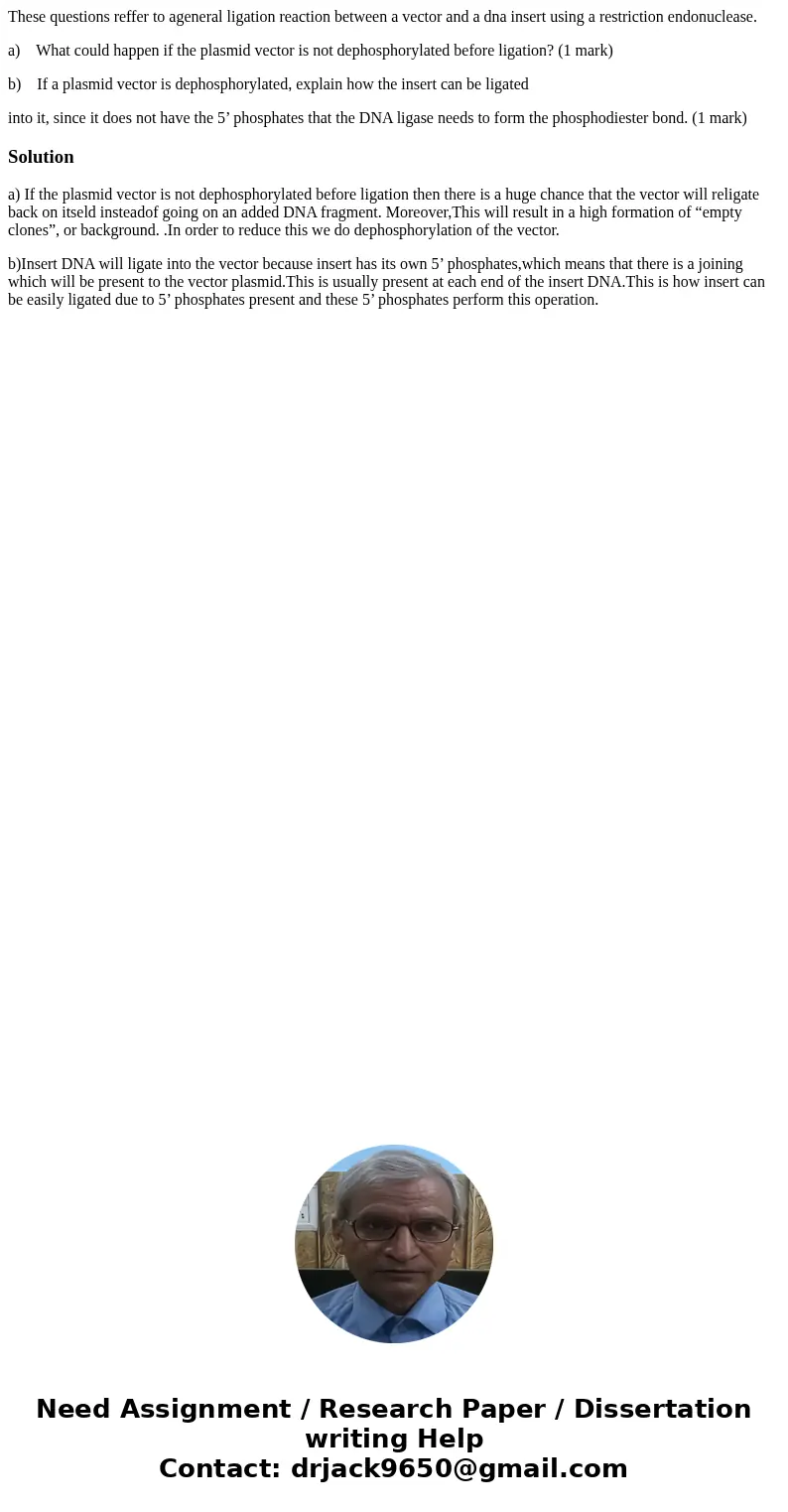These questions reffer to ageneral ligation reaction between
These questions reffer to ageneral ligation reaction between a vector and a dna insert using a restriction endonuclease.
a) What could happen if the plasmid vector is not dephosphorylated before ligation? (1 mark)
b) If a plasmid vector is dephosphorylated, explain how the insert can be ligated
into it, since it does not have the 5’ phosphates that the DNA ligase needs to form the phosphodiester bond. (1 mark)
Solution
a) If the plasmid vector is not dephosphorylated before ligation then there is a huge chance that the vector will religate back on itseld insteadof going on an added DNA fragment. Moreover,This will result in a high formation of “empty clones”, or background. .In order to reduce this we do dephosphorylation of the vector.
b)Insert DNA will ligate into the vector because insert has its own 5’ phosphates,which means that there is a joining which will be present to the vector plasmid.This is usually present at each end of the insert DNA.This is how insert can be easily ligated due to 5’ phosphates present and these 5’ phosphates perform this operation.

 Homework Sourse
Homework Sourse